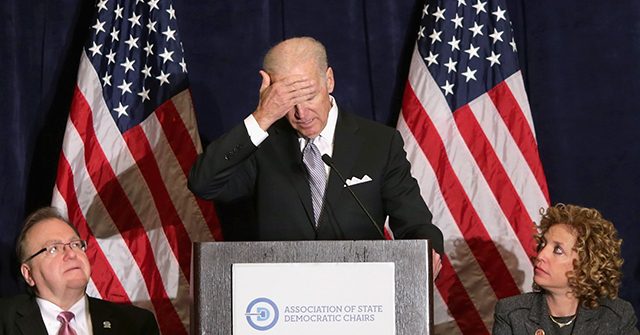

On the betting site PredictIt, oddsmakers suggest a Republican victory in the U.S. Senate in the 2022 midterm elections, and they are even more emphatic about a Republican victory in the U.S. House. Even the insider-y Cook Political Report prophesies that the GOP will gain between 20 and 35 seats in the House.
But might the positive indicators for Republicans change between now and November? After all, each days’ news brings some startling development, such as the tragic mass murder in Uvalde, TX. Could that horrifying incident shake up politics?
As we know, the Main Stream Media is on the case, seeking to turn that tragedy into an electoral game-changer for the Democrats. For instance, on May 26, the morning after the shooting, Politico blared, “New poll shows huge support for gun restrictions.” That same day, The New York Times eagerly informed its liberal readership:
The House Democratic campaign arm pledged to “remind voters that we’ll keep fighting to pass common sense solutions—Republicans won’t.” And John Feinblatt, the president of Everytown for Gun Safety—which has spent heavily through its political arm before in general elections—said the organization would “move heaven and earth to defeat candidates who put N.R.A. priorities ahead of public safety.”
Will all this MSM effort turn things around for Democrats? We won’t know for sure until November, but in the meantime, we should remember that sudden jolts can come from any direction. And so this headline is worth a ponder: “Biden Admin: K-12 Schools Must Put Boys in Girls’ Bathrooms to Get Federal Lunch Money.” As The Federalist reports, the U.S. departments of agriculture and education are working on rules to “combat discrimination against [the] LGBTQI+ community.” The Federalist adds tartly, the “administration is pushing sexual confusion on as many institutions as it can.”
The Biden rules are still in process and might not be released until after November; perhaps that slow-roll is part of the Democratic strategy. That is, after having already been burned on Critical Race Theory and grooming, Democrats intend to keep cool with more hot-button stuff until after the midterm elections. And so maybe in the meantime, only a few will notice this looming top-down sexual revolution. Or maybe a lot of people will notice, in which case, Dems will be sorry.
Yet most likely, the real lesson of 2022 is that the daily media splish-splash will prove less important to the electoral outcome than the deep currents of public opinion, driven by big nationwide concerns. That’s a takeaway from a new FiveThirtyEight/Ipsos survey, which finds that a whopping 52 percent of Americans count inflation as the most important issue facing the country. Indeed, the public deems rising prices to be almost twice as important as any other issue.
What’s also undeniable is that the current inflation rate, 8.3 percent, is six times higher than it was when former president Donald Trump left office—and so Democrats have a big problem.
To be sure, the top Democrat, Joe Biden, blames everyone but himself for the price-surge, but as a far better Democratic president, Harry Truman, always maintained, “The buck stops here.” That is, whatever happens, good or bad, is on the commander-in-chief. Nobody makes you take that job, but if you get it, expect to be held to account, because buck-passing won’t work. And we can add that the c-in-c’s political party, too, is at risk of being, uh, bucked.
All this helps explain another poll, taken by the Democratic Congressional Campaign Committee, that leaked on May 18; Punchbowl News had the scoop: “In battleground districts, the generic Republican is beating the generic Democrat, 47-39.” As the poll further detailed, most voters “want a Republican in Congress to provide a check on Biden, rather than a Democrat to help pass Biden and Pelosi’s agenda.”
There’s an underlying logic here: Just as voters are holding Biden accountable for the inflation rate, so, too, they are determined to elect men and women who will check the president’s power to do further harm. This is a national thought process that’s destined to transcend the ups and downs of the news cycle—good, bad, and tragic.
A few days later, Punchbowl added some perspective on the polling numbers it had scooped:
If you’re a House Democrat and you believe it’s good news to have your vulnerable lawmakers down eight points to Republicans, President Joe Biden flatlining in most public opinion polls and Americans struggling to pay for gas, find a used car or new home—not to mention being able to buy baby formula—we can’t help you.
The site concluded, “There’s a reason that 30-plus House Democrats are retiring or have already left office this cycle, compared to only half as many Republicans.”
On May 23 came another poll, from Schoen Cooperman, also finding deep currents of discontent: The top three national issues were inflation, gas prices, and the economy.
In this sort of environment, even the May 2 leak of the draft Supreme Court decision—so hyped by the MSM—had no apparent effect on voter intentions. (Indeed, the May 24 primary victory of the last remaining pro-life Democrat in the House, Rep. Henry Cuellar of Texas, indicates that the pro-choice position is not even a decisive issue for the left.)
To be sure, Democrats have not given up. They will be trotting out their least-flattering pictures of Trump, morphing him with any and all Republicans. Yet in the words of Edward Luce, a thoughtful pundit writing for the neoliberal Financial Times,
Unfortunately for Biden, Trump’s name will not appear on any ballot in this year’s midterm elections, which threaten to become a Republican rout.
Of course, it is always possible that some heretofore small issue could get big. For instance, there is the matter of pro-abortion anarchists attacking pro-life churches. If the issue is “just” vandalism, then few votes will change, but if the violence gets out of hand, as it did in 2020, then Democrats could have a problem. That’s what happened two years ago, when the excesses of Antifa and Black Lives Matter caused a backlash, enabling the GOP to gain 14 House seats.
Yes, for Republicans, the situation is looking good. (The situation for the country is a different matter.) So the GOP is best advised to go with the flow. It’s a flow—mostly powered by inflation and the national economy, as we have seen—that is taking the Democrats over the falls. And so best not to mess with messages that can be interpreted as a call for a tax increase. As Napoleon counseled, “Never interfere with the enemy when he is in the process of destroying himself.” So let the Democrats have the national stage—the hot lights are melting them.
For inspiration as to the value of a simple message of Napoleonic hands-off oppositionalism, we might look back to the enormous success Republicans enjoyed in the 1946 midterm elections, when the GOP, opposing a Democratic president, captured both the House and the Senate (hint, hint) away from Democrats.
In the national messaging of that long-ago campaign, Republicans kept it simple, asking a loaded two-word question, “Had Enough?” GOPers figured that the voters would fill in the blanks with their own answer about Democratic mismanagement. As former Philadelphia Inquirer reporter Dick Polman wrote of that midterm, “‘Had Enough?’ was the winning slogan for Republicans in the 1946 congressional elections.”
That was the plan: “only a national slogan, not a platform.” Polman continued of Republicans in that year:
They tapped into the public’s postwar weariness about inflation (20 percent), housing shortages, meat rationing, and labor strife—all of which became identified with the Democrats, who had ruled Congress and the White House for the past 13 years. The Republicans didn’t ever say how they would cure any of those ills (except for a vague promise to root out communism)—but they picked up 13 Senate seats and 56 House seats that November, giving them majorities in both chambers, simply by making the race a referendum on the “in” party.
That was the key point in 1946: Make the election a referendum on the “in” party.
So now in 2022, the same dynamic holds: Make the election about Biden and the Democrats. Let’s not get in the way of a smoothly flowing countdown to victory.






